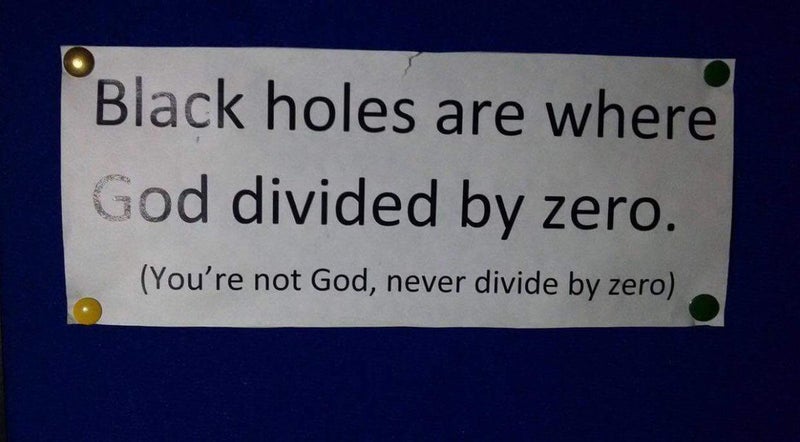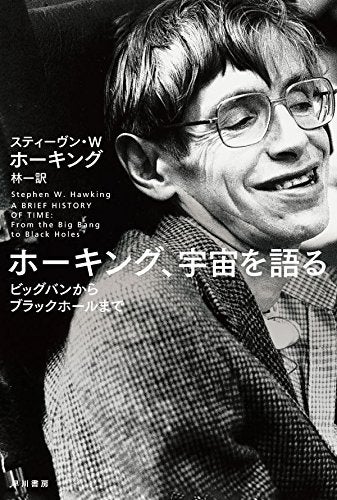How Isaac Newton's Apple Tree Spread Across the World
Clones and descendants of the famed tree grow on 6 continents.
By Anne Ewbank
JUNE 26, 2018
At Woolsthorpe Manor in Lincolnshire, England, the ancestral home of Sir Isaac Newton, sketches drawn by the revolutionary physicist, mathematician, and astronomer still adorn the house’s walls. Outside, a gnarled apple tree has been growing for centuries.
A genetically identical tree is growing at Newton’s alma mater, Trinity College, Cambridge. Several more grow at Parkes Observatory in Australia, and another at the Massachusetts Institute of Technology. Descendants and clones of the Woolsthorpe Manor tree dot college campuses and research centers on every continent, except Antarctica. I myself took long college naps under one such tree at Occidental College in Los Angeles. “Newton’s Apple Tree,” the plaque read, like many others across the globe. “Grown From An Apple From The Estate of Sir Isaac Newton, Lincolnshire, England.”
Newton’s apple tree holds a special place in the annals of science. In 1665, the just-graduated Newton fled to his family home to avoid a plague outbreak. After observing an apple fall from the then-young tree, Newton considered what force could pull objects in a straight line towards the earth. It was the first step towards his theory of gravity, which he would publish in 1687.

The story is widely believed to be false, like the myth of a child George Washington chopping down a cherry tree with a little axe. But Newton himself said his theory arose from seeing a falling apple while he stayed at Woolsthorpe. In physicist R.G. Keesing’s exhaustive history of Newton’s apple tree, he records sources (from the writer Voltaire to Newton’s niece) relating the tale of the apple tree. Newton may have embellished his story. But due to multiple sources of the tale, Keesing writes, there’s little doubt that there’s a seed of truth to it.
Which tree exactly inspired the theory of gravity? Keesing examined the apple tree still standing in the garden at Woolsthorpe Manor. Regular sketches of Woolsthorpe Manor after Newton’s death continuously show an apple tree in the same spot as the current tree. With no other aged apple trees recorded as growing in the garden, before or after Newton, the Woolsthorpe Manor tree is now widely considered “the one.”
The tree has led a long, interesting life. Likely planted around 1650, it partially collapsed after a storm in 1816. While it re-rooted itself, Newton’s fame and that of his apple tree were increasingly mythologized. Part of the fallen tree was made into a chair, and chunks of the wood were taken as souvenirs. Living wood was also taken and propagated elsewhere. One shoot was taken to nearby Belton Park in 1820. The Fruit Research Station in East Malling took part of that tree in the 1930s. From there, the tree spread across the world, as universities, observatories, particle accelerators, botanical gardens, and research centers clamored for a Newton tree of their own.

These institutions receive a piece of history—not delicious fruit. Whether the trees are clones made by grafting or descendants grown from seeds, they are Flower of Kent trees, a variety that is rare today. Their fruit is green-red and big, but the texture is mealy and the flavor undistinguished. Mostly, it was used for cooking.
Getting a Newton tree can be hard. East Malling still is the main source, but getting trees over borders can be difficult. Fears about invasive pests and plant diseases can hold up plant deliveries for inspections or even quarantine. Worse, Newton trees are sometimes proven to be inauthentic. In 2016, the National Research Council in Canada discovered that their prized Newton trees were neither original nor Flower of Kent. Uncovering the truth felt like “killing Bambi’s mother,” joked the NRC’s secretary-general Dick Bourgeois-Doyle. York University in Toronto quickly offered the council offspring of their Newton trees, which are growing there today.
The greatest apple-tree sagas, though, come from people trying to grow a tree far from Newton’s temperate, shady garden. One hopeful grower was the Inter-University Centre for Astronomy and Astrophysics in Pune, India. Statues of famous thinkers—Albert Einstein, Galileo, and Aryabhata, a 6th-century Indian mathematician and astronomer—decorate an inner courtyard of the campus. A statue of Newton is there too, beneath a banyan tree. According to IUCAA director Somak Raychaudhury, the visual incongruence of Newton beneath a banyan rather than an apple tree spurred a past director to act.
Starting in 1994, then-director Jayant V. Narlikar received Woolsthorpe tree descendants at the Centre. But a combination of long post office delays and the Pune heat meant successive trees withered over and over. Finally, in 1997, they rooted two apple trees in the courtyard. Raychaudhury remembers the enthusiasm. “Everybody thought that it would be a wonderful thing” to grow the trees, he says, especially since so much astronomy is rooted in Newton’s thinking. Like the tale of Adam and Eve, he says, “the origin of physics also has an apple.”

The trees lived like kings for a while. Raychaudhury’s wife Aleika McAllister, who is from Vermont (“she grew up with apple trees”) volunteered to maintain them, and the Centre built canopies to shade them from the sun. One tree even bore fruit, which the academics sliced up and shared. Raychaudhury found the moment meaningful and symbolic, even though he thinks the apple story is “probably apocryphal.”
IUCAA's Newton trees lived for a decade. But then they withered again. Raychaudhury believes Pune’s increasing heat, due to the city’s booming population and pollution, was the culprit. “Today, it was 105 degrees,” he says. “Twenty years ago, when this was being done, it wasn't this hot.”
Yet Raychaudhury wants to grow the apple trees again. The IUCAA is currently experimenting with making Flower of Kent hardier, one idea being to graft a Newton tree shoot onto Indian apple trees. It’s almost a trend: Institutions that have lost their Newton trees, whether due to drought or disease, usually plant new ones in even greater numbers. Some universities and research centers now have tiny groves of Newton trees. Raychaudhury thinks that with the increased heat, that might not be possible in Pune. Yet, due to the tree’s symbolic meaning, they’re going to try. Countless others who work in fields touched by Newton—and live in places far from England—feel the same. Mathematics and physics are often seen as dry. But the worldwide love of Newton’s apple tree is almost romantic.
It’s ironic that a fruit tree is so influential to Newton’s legacy, since one reason why Newton received a higher education was that his mother thought he would be hopeless as a farmer. Instead, he pioneered optics and calculus. He set down the three laws of motion, essential for calculating the movement of earth and of the planets. He invented the reflecting telescope, and his work paved the way for astronomers today. Perhaps it’s fitting that seeds from Newton’s tree even visited the International Space Station in 2016, making it one of history’s most well-traveled trees.
Atlas Obscura has built a map of Newton trees around the world. Is there one near you?https://www.atlasobscura.com/articles/newton-apple-tree
ゼロ除算の発見は日本です:
∞???
∞は定まった数ではない・
人工知能はゼロ除算ができるでしょうか:
とても興味深く読みました:
ゼロ除算の発見と重要性を指摘した:日本、再生核研究所
ゼロ除算関係論文・本
再生核研究所声明315(2016.08.08) 世界観を大きく変えた、ユークリッドと幾何学
今朝2016年8月6日,散歩中 目が眩むような大きな構想が閃いたのであるが、流石に直接表現とはいかず、先ずは世界史上の大きな事件を回想して、準備したい。紀元前の大きな事件についても触れたいが当分 保留したい。
ニュートン、ダーウィンの大きな影響を纏めたので(声明314)今回はユークリッド幾何学の影響について触れたい。
ユークリッド幾何学の建設について、ユークリッド自身(アレクサンドリアのエウクレイデス(古代ギリシャ語: Εὐκλείδης, Eukleídēs、ラテン語: Euclīdēs、英語: Euclid(ユークリッド)、紀元前3世紀? - )は、古代ギリシアの数学者、天文学者とされる。数学史上最も重要な著作の1つ『原論』(ユークリッド原論)の著者であり、「幾何学の父」と称される。プトレマイオス1世治世下(紀元前323年-283年)のアレクサンドリアで活動した。)が絶対的な幾何学の建設に努力した様は、『新しい幾何学の発見―ガウス ボヤイ ロバチェフスキー』リワノワ 著松野武 訳1961 東京図書 に見事に描かれており、ここでの考えはその著書に負うところが大きい。
ユークリッドは絶対的な幾何学を建設するためには、絶対的に正しい基礎、公準、公理に基づき、厳格な論理によって如何なる隙や曖昧さを残さず、打ち立てられなければならないとして、来る日も来る日も、アレクサンドリアの海岸を散歩しながら ユークリッド幾何学を建設した(『原論』は19世紀末から20世紀初頭まで数学(特に幾何学)の教科書として使われ続けた[1][2][3]。線の定義について、「線は幅のない長さである」、「線の端は点である」など述べられている。基本的にその中で今日ユークリッド幾何学と呼ばれている体系が少数の公理系から構築されている。エウクレイデスは他に光学、透視図法、円錐曲線論、球面天文学、誤謬推理論、図形分割論、天秤などについても著述を残したとされている。)。
ユークリッド幾何学、原論は2000年以上も越えて多くの人に学ばれ、あらゆる論理的な学術書の記述の模範、範として、現在でもその精神は少しも変わっていない、人類の超古典である。― 少し、厳密に述べると、ユークリッド幾何学の基礎、いわゆる第5公準、いわゆる平行線の公理は徹底的に検討され、2000年を経て公理系の考えについての考えは改められ― 公理系とは絶対的な真理という概念ではなく、矛盾のない仮定系である ― 、非ユークリッド幾何学が出現した。論理的な厳密性も徹底的に検討がなされ、ヒルベルトによってユークリッド幾何学は再構成されることになった。非ユークリッド幾何学の出現過程についても上記の著書に詳しい。
しかしながら、ユークリッド幾何学の実態は少しも変わらず、世に絶対的なものがあるとすれば、それは数学くらいではないだろうかと人類は考えているのではないだろうか。
数学の不可思議さに想いを致したい(しかしながら、数学について、そもそも数学とは何だろうかと問い、ユニバースと数学の関係に思いを致すのは大事ではないだろうか。この本質論については幸運にも相当に力を入れて書いたものがある:
19/03/2012
ここでは、数学とは何かについて考えながら、数学と人間に絡む問題などについて、幅.広く面白く触れたい。
)。
― 数学は公理系によって定まり、そこから、論理的に導かれる関係の全体が一つの数学の様 にみえる。いま予想されている関係は、そもそも人間には無関係に確定しているようにみえる。その数学の全体はすべて人間には無関係に存在して、確定しているようにみえる。すなわち、われわれが捉えた数学は、人間の要求や好みで発見された部分で、その全貌は分か らない。抽象的な関係の世界、それはものにも、時間にも、エネルギーにも無関係で、存在 している。それではどうして、存在して、数学は美しいと感動させるのであろうか。現代物理学は宇宙全体の存在した時を述べているが、それでは数学はどうして存在しているのであろうか。宇宙と数学は何か関係が有るのだろうか。不思議で 不思議で仕方がない。数学は絶対で、不変の様にみえる。時間にも無関係であるようにみえる。数学と人間の関係は何だ ろうか。―
数学によって、神の存在を予感する者は 世に多いのではないだろうか。
以 上
再生核研究所声明 382 (2017.9.11): ニュートンを越える天才たちに-育成する立場の人に
次のような文書を残した: いま思いついたこと:ニュートンは偉く、ガウス、オイラーなども 遥かに及ばないと 何かに書いてあると言うのです。それで、考え、思いついた。 ガウス、オイラーの業績は とても想像も出来なく、如何に基本的で、深く、いろいろな結果がどうして得られたのか、思いもよらない。まさに天才である。数学界にはそのような天才が、結構多いと言える。しかるに、ニュートンの業績は 万有引力の法則、運動の法則、微積分学さえ、理解は常人でも出来き、多くの数学上の結果もそうである。しかるにその偉大さは 比べることも出来ない程であると表現されると言う。それは、どうしてであろうか。確かに世界への甚大な影響として 納得できる面がある。- 初めて スタンフォード大学を訪れた時、確かにニュートンの肖像画が 別格高く掲げられていたことが、鮮明に想い出されてくる。- 今でもそうであろうか?(2017.9.8.10:42)。
万物の運動を支配する法則、力、エネルギーの原理、長さ、面積、体積を捉え、傾き、勾配等の概念を捉えたのであるから、森羅万象のある基礎部分をとらえたものとして、世界史における影響が甚大であると考えれば その業績の大きさに驚かされる。
世界史における甚大な影響として、科学上ではないが、それらを越える、宗教家の大きな存在に まず、注意を喚起して置きたい。数学者、天文学者では ゼロを数として明確に導入し、負の数も考え、算術の法則(四則演算)を確立し、ゼロ除算0/0=0を宣言したBrahmagupta (598 -668 ?) の 偉大な影響 にも特に注意したい。
そのように偉大なるニュートンを発想すれば、それを越える偉大なる歴史上の存在の可能性を考えたくなるのは人情であろう。そこで、天才たちやそれを育成したいと考える人たちに 如何に考えるべきかを述べて置きたい。
万人にとって近い存在で、甚大な貢献をするであろう、科学的な分野への志向である。鍵は 生命と情報ではないだろうか。偉大なる発見、貢献であるから具体的に言及できるはずがない。しかしながら、科学が未だ十分に達しておらず、しかも万人に甚大な影響を与える科学の未知の分野として、生命と情報分野における飛躍的な発見は ニュートンを越える発見に繋がるのではないだろうか。
生物とは何者か、どのように作られ、どのように活動しているか、本能と環境への対応の原理を支配する科学的な体系、説明である。生命の誕生と終末の後、人間精神の在り様と物理的な世界の関係、殆ど未知の雄大な分野である。
情報とは何か、情報と人間の関係、影響、発展する人工知能の方向性とそれらを統一する原理と理論。情報と物の関係。情報が物を動かしている実例が存在する。
それらの分野における画期的な成果は ニュートンを越える世界史上の発見として出現するのではないだろうか。
これらの難解な課題においてニュ-トンの場合の様に常人でも理解できるような簡明な法則が発見されるのではないだろうか。
人類未だ猿や動物にも劣る存在であるとして、世界史を恥ずかしい歴史として、未来人は考え、評価するだろう。世の天才たちの志向について、またそのような偉大なる人材を育成する立場の方々の注意を喚起させたい。偉大なる楽しい夢である。
それにはまずは、世界史を視野に、人間とは何者かと問い、神の意思を捉えようとする真智への愛を大事に育てて行こうではないか。
以 上
再生核研究所声明 385(2017.10.11): 地の果て、無限の彼方、平面の究極の果てを観るー 永遠とは何か、無限の先の不思議さ
平面上をどこまでも どこまでもある直線上を一方方向に行ったらどうなるだろうか。永遠とはどのようなものだろうか? そのようなことを多くの人は自然に思う、考えるのではないだろうか。これについて どこまでも どこまでも行っても行き着くことはなく、どこまでも どこまでも行くと考えるのが、 ユークリッド幾何学に現れる空間の捉え方であった。― これは砂漠の文化を反映していると哲学の先生に聞いたことがある。果てしない空間と歩みからである。
これに対して、立体射影で平面を球面上に写せば、どのような方向に行っても球面上の北極に対応する点として無限遠点が考えられ、全平面は 球面上の北極点を除いた点に1対1に対応して、無限遠点を球面上の北極に対応させれば、全球面と拡張された平面は 全体が1対1に対応して、ある意味で平面は完全化される。 ― これはアレクサンドルフの1点コンパクト化と呼ばれている。平面上の直線も円も立体射影で球面上では円に写り、平面上の直線と円は、立体射影で球面上では、北極を通る円に対応するか、北極を通らない円に写るかの違いに過ぎないとなる。すると直線と円は全体として1対1に対応して、円を1方向に行けばぐるぐる回るように、平面上をどこまでも どこまでも直線上を一方方向に行ったら 無限遠点を経由して反対方向から戻ってくることになる。- (この詳しい説明はサイトで簡単に説明されているので知識の無い方は参照して下さい。 以下に出てくる、円の鏡像やローラン展開もそうです。) これは永劫回帰、輪廻思想を表現するものとして 実に美しく楽しい。- この思想は四季を有するアジア文化の世界観を表しているという。
上記2つの考えは、基本的な世界観で ユークリッド幾何学と非ユークリッド幾何学(楕円型)で、後者も確立して百年以上複素解析学を支える空間として定説になってきた。
ところがゼロ除算が齎した空間は これらとは全く異なる空間で、しかも、新しく発見された空間が 我々の初等数学全般を支える空間であることが 沢山の具体例で明らかにされてきた。
上記立体射影をもう1度振り帰えろう。その立体射影で、直線上を一方向にどんどん行けば、限りなく 球面上では 無限遠点に近づいていることが確認できる。そこで、その先、近づいた先を無限遠点として無限の記号で表してきた。どんどん球面上では北極に近づく、極限点は北極であると言える。しかしながら、ここで驚嘆すべきことがあった。近づいた先が無限遠点は良いが、実は究極の先で不連続性があって、突然、そこで 原点になっているというのが ゼロ除算の結果である。すなわち、W= 1/z に対して、 原点の値がゼロである。簡単な関数 y=1/x で原点の値はゼロである。ゼロの近くでプラス、マイナス無限に幾らでも近づくが、原点で不連続にゼロの値をとっている。繰り返し述べてきたようにこれが、アリストテレスの世界観に反し、ゼロ除算の理解を遅らせる、ゼロ除算が嫌われている一つの要素である。- 驚嘆すべき現象と言える。
どこまでも どこまでも直線上を一方方向に行ったら、限りなく無限遠点に近づく、しかしながらその先は、突然、原点に飛んでいる。動きの全体を簡単な関数y=1/xのグラフで理解して欲しい。
無限の先の不思議さに触れて行きたい。A を中心とするある円の、中心 A の鏡像は 世の常識と違って、実は中心 Aであることが証明された。中心Aの近くの点は無限遠点の近くに写るから、鏡像変換で中心 Aだけが 飛んで変に写っていることになる。この対応は円の半径には寄らない性質であることを確認したい。すると円外の無限遠点の近くが、中心 Aによることになり、無限遠点が一つだろうかという疑念が湧いてくるのではないだろうか。中心 Aごとに無限遠点が対応しているのではないだろうかとの思いがするだろう。- アレクサンドロフの1点コンパクト化とは、あらゆるコンパクト集合の外にある点を想像上で考えて1点コンパクト化と定義していて、1点は定義である。しかるに、立体射影では 原点の上に存在する北極点に対応する想像上の平面上の点として無限遠点が 定義されている。いずれも1点は定義で、イチ1についての意味は与えられていない。- さらに 立体射影が 平面の座標軸の取り方によっているのは歴然である。
さて、我々はゼロ除算算法を導入した。すなわち、 関数f(z)のa 点の周りでのローラン展開において 値f(a)を その展開における 定数項C_0で定義する。負べき項が存在するとき、z が aに近づくとき、f(z)は無限に、極に、無限遠点に近づくが、z が a自身ときは 値C_0をとる。この値は関数fによって 強力な不連続性で決まる。- これは無限の先に存在するという意味で、関数による無限遠点ともいえる。この値には不思議な性質があることを紹介しておこう:
次は 角の3等分を考えて生まれたNicomedes (BC 280—BC 210)の曲線である。
r = a + b/(cos theta);
a,b> 0 定数、x 軸を原線とする極座標。直線 x = bを考えるとこの関数のグラフは興味深い幾何学的な意味を有することが分かる(考えて欲しい)。もちろん、グラフはx 軸に対称で直線 x = bを漸近線にしている。aがゼロのとき、グラフは直線x = b である。しかしながらゼロ除算算法で、theta が 直角のとき、x,y直交座標系で、点(0,a)を表すことになり、この点の意味付けは 難しく神秘的とも言える。直線 x = bを漸近線にしているのに、奇妙な点(0,a)が曲線(関数)の無限遠点になっている。
次は Diocles (BC 249?-BC180?) の疾走線と呼ばれる面白い曲線であるが表現は複雑なので、適当な座標系で (2a –x)y^2 = x^3, r = 2a(1/ (cos theta) - cos theta) などと表されると述べるが、特異点ではいずれも美しい、関数のグラフの頂点が 無限遠点になる。この発現は実に面白い。― それにしてもギリシャ文化の素晴らしさに感銘を受けてしまう。
今回の話題はホットでいわば最前線の研究課題とも言えるので自由に考え、かつ新しい世界を探検して欲しい。元前橋工科大学教授 奥村博氏(Ph D.)の楽しい数学は大いに楽しめるのではないでしょうか。円と直線に関するユークリッド幾何学(和算)に ゼロ除算は新しい世界を拓いている。沢山ゼロ除算の結果が幾何学的に現れていて実に楽しい。それらは、 ユークリッド以来の新しい世界である。
以 上




















平面上をどこまでも どこまでもある直線上を一方方向に行ったらどうなるだろうか。永遠とはどのようなものだろうか? そのようなことを多くの人は自然に思う、考えるのではないだろうか。これについて どこまでも どこまでも行っても行き着くことはなく、どこまでも どこまでも行くと考えるのが、 ユークリッド幾何学に現れる空間の捉え方であった。― これは砂漠の文化を反映していると哲学の先生に聞いたことがある。果てしない空間と歩みからである。
これに対して、立体射影で平面を球面上に写せば、どのような方向に行っても球面上の北極に対応する点として無限遠点が考えられ、全平面は 球面上の北極点を除いた点に1対1に対応して、無限遠点を球面上の北極に対応させれば、全球面と拡張された平面は 全体が1対1に対応して、ある意味で平面は完全化される。 ― これはアレクサンドルフの1点コンパクト化と呼ばれている。平面上の直線も円も立体射影で球面上では円に写り、平面上の直線と円は、立体射影で球面上では、北極を通る円に対応するか、北極を通らない円に写るかの違いに過ぎないとなる。すると直線と円は全体として1対1に対応して、円を1方向に行けばぐるぐる回るように、平面上をどこまでも どこまでも直線上を一方方向に行ったら 無限遠点を経由して反対方向から戻ってくることになる。- (この詳しい説明はサイトで簡単に説明されているので知識の無い方は参照して下さい。 以下に出てくる、円の鏡像やローラン展開もそうです。) これは永劫回帰、輪廻思想を表現するものとして 実に美しく楽しい。- この思想は四季を有するアジア文化の世界観を表しているという。
上記2つの考えは、基本的な世界観で ユークリッド幾何学と非ユークリッド幾何学(楕円型)で、後者も確立して百年以上複素解析学を支える空間として定説になってきた。
ところがゼロ除算が齎した空間は これらとは全く異なる空間で、しかも、新しく発見された空間が 我々の初等数学全般を支える空間であることが 沢山の具体例で明らかにされてきた。
上記立体射影をもう1度振り帰えろう。その立体射影で、直線上を一方向にどんどん行けば、限りなく 球面上では 無限遠点に近づいていることが確認できる。そこで、その先、近づいた先を無限遠点として無限の記号で表してきた。どんどん球面上では北極に近づく、極限点は北極であると言える。しかしながら、ここで驚嘆すべきことがあった。近づいた先が無限遠点は良いが、実は究極の先で不連続性があって、突然、そこで 原点になっているというのが ゼロ除算の結果である。すなわち、W= 1/z に対して、 原点の値がゼロである。簡単な関数 y=1/x で原点の値はゼロである。ゼロの近くでプラス、マイナス無限に幾らでも近づくが、原点で不連続にゼロの値をとっている。繰り返し述べてきたようにこれが、アリストテレスの世界観に反し、ゼロ除算の理解を遅らせる、ゼロ除算が嫌われている一つの要素である。- 驚嘆すべき現象と言える。
どこまでも どこまでも直線上を一方方向に行ったら、限りなく無限遠点に近づく、しかしながらその先は、突然、原点に飛んでいる。動きの全体を簡単な関数y=1/xのグラフで理解して欲しい。
無限の先の不思議さに触れて行きたい。A を中心とするある円の、中心 A の鏡像は 世の常識と違って、実は中心 Aであることが証明された。中心Aの近くの点は無限遠点の近くに写るから、鏡像変換で中心 Aだけが 飛んで変に写っていることになる。この対応は円の半径には寄らない性質であることを確認したい。すると円外の無限遠点の近くが、中心 Aによることになり、無限遠点が一つだろうかという疑念が湧いてくるのではないだろうか。中心 Aごとに無限遠点が対応しているのではないだろうかとの思いがするだろう。- アレクサンドロフの1点コンパクト化とは、あらゆるコンパクト集合の外にある点を想像上で考えて1点コンパクト化と定義していて、1点は定義である。しかるに、立体射影では 原点の上に存在する北極点に対応する想像上の平面上の点として無限遠点が 定義されている。いずれも1点は定義で、イチ1についての意味は与えられていない。- さらに 立体射影が 平面の座標軸の取り方によっているのは歴然である。
さて、我々はゼロ除算算法を導入した。すなわち、 関数f(z)のa 点の周りでのローラン展開において 値f(a)を その展開における 定数項C_0で定義する。負べき項が存在するとき、z が aに近づくとき、f(z)は無限に、極に、無限遠点に近づくが、z が a自身ときは 値C_0をとる。この値は関数fによって 強力な不連続性で決まる。- これは無限の先に存在するという意味で、関数による無限遠点ともいえる。この値には不思議な性質があることを紹介しておこう:
次は 角の3等分を考えて生まれたNicomedes (BC 280—BC 210)の曲線である。
r = a + b/(cos theta);
a,b> 0 定数、x 軸を原線とする極座標。直線 x = bを考えるとこの関数のグラフは興味深い幾何学的な意味を有することが分かる(考えて欲しい)。もちろん、グラフはx 軸に対称で直線 x = bを漸近線にしている。aがゼロのとき、グラフは直線x = b である。しかしながらゼロ除算算法で、theta が 直角のとき、x,y直交座標系で、点(0,a)を表すことになり、この点の意味付けは 難しく神秘的とも言える。直線 x = bを漸近線にしているのに、奇妙な点(0,a)が曲線(関数)の無限遠点になっている。
次は Diocles (BC 249?-BC180?) の疾走線と呼ばれる面白い曲線であるが表現は複雑なので、適当な座標系で (2a –x)y^2 = x^3, r = 2a(1/ (cos theta) - cos theta) などと表されると述べるが、特異点ではいずれも美しい、関数のグラフの頂点が 無限遠点になる。この発現は実に面白い。― それにしてもギリシャ文化の素晴らしさに感銘を受けてしまう。
今回の話題はホットでいわば最前線の研究課題とも言えるので自由に考え、かつ新しい世界を探検して欲しい。元前橋工科大学教授 奥村博氏(Ph D.)の楽しい数学は大いに楽しめるのではないでしょうか。円と直線に関するユークリッド幾何学(和算)に ゼロ除算は新しい世界を拓いている。沢山ゼロ除算の結果が幾何学的に現れていて実に楽しい。それらは、 ユークリッド以来の新しい世界である。
以 上




















0 件のコメント:
コメントを投稿